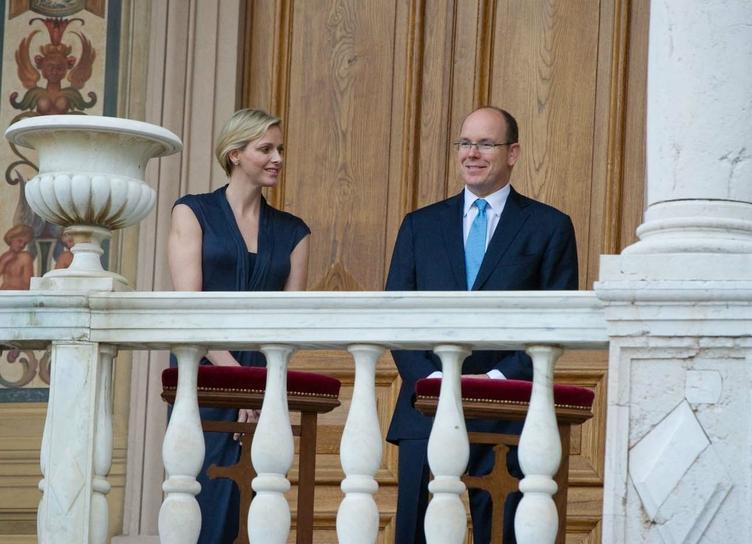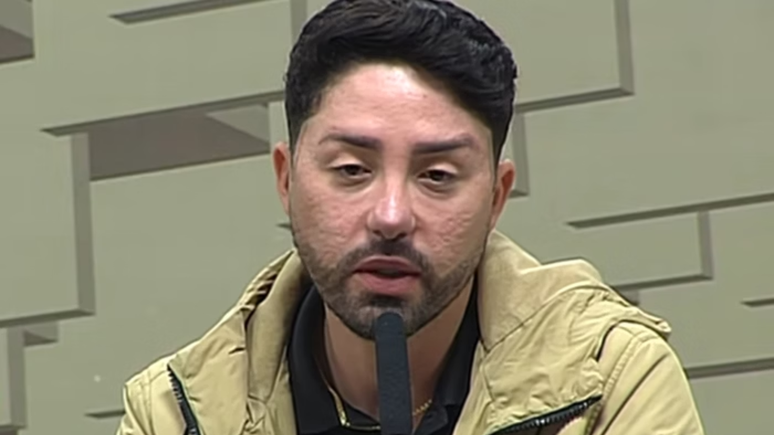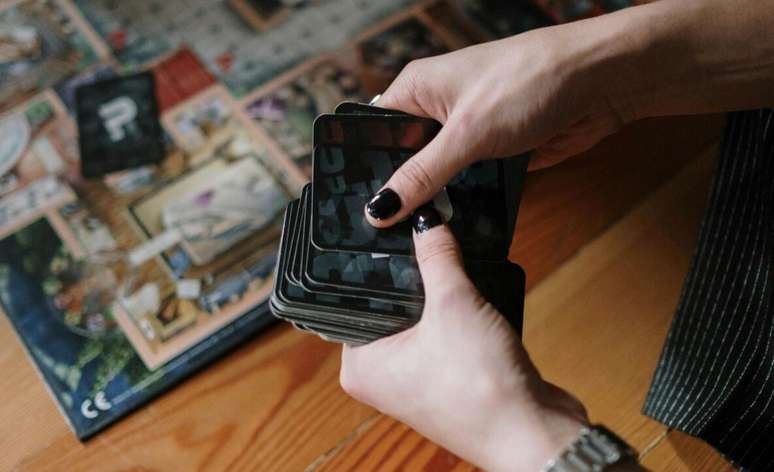______________________________
Silk and brocade, stucco and frescoes, massive crystal chandeliers and stained-glass windows, magnificent gardens and unique works of art – for members of the royal families this is not a luxury, but quite ordinary interiors familiar from childhood. How do kings live, and not medieval ones, whose life is recreated in museums, but modern ones? Where do they work? Where do they walk? Many current monarchs open the doors of their residences to the public. In the weekly HELLO! We offer you to get acquainted with the most unusual of them.

Spain
The Royal Palace in Madrid is the largest in Western Europe and one of the largest in the world. There are 3,418 premises on an area of more than 135,000 square meters. It has the shape of a square with a large courtyard and long galleries. This particular palace was built already in the 18th century, but the place where it is located is a witness to centuries of Spanish history. In the 9th century, the emir of Cordoba, Mohammed I, built the Alcazar fortress on it. It later became a royal treasury, and in 1561 Philip II made it the official residence of the kings of Spain. This fortress, with all its luxurious decoration and works of art from the golden age, was destroyed by fire on Christmas Eve 1734. Legend has it that the courtiers and compatriots of the French-born King Philip V, the former Duke of Anjou, set the fire on purpose to force him to build a new French-style palace. But there is no evidence for this. To build a new palace, Philip V invited the best European architect of his time – Filippo Juvarra, a representative of the late Baroque. He resolutely got down to business, but did not see what came of it – in those days it was a very common phenomenon, since the construction took many years. The project was completed by his student Giovanni Battista Sacchetti. The foundation stone was laid in 1738, construction work continued until 1751, and landscaping and finishing work continued until 1759. The palace of the Bourbon dynasty acquired its final form already with the help of Francesco Sabatini, the architect of Charles III, the first monarch who lived in the Royal Palace. And he settled in it in 1764. Since then, this house has changed many owners, and everyone has brought something of their own to it – from interiors and decoration, including porcelain, clocks, furniture, silverware and the world’s only complete string “royal” quintet of Antonio Stradivari – to canvases great artists such as Caravaggio, Juan de Flandes, Francisco de Goya and Diego Velasquez, and frescoes by Giovanni Battista Tiepolo, Corrado Giaquinto and Anton Raphael Mengs.

This is one of the few official residences of the king, which open to the public. Almost two million visitors visit it every year. It is so large that the itinerary for visitors only includes a few rooms, and it changes every few months. Since the reign of Juan Carlos – the father of the current monarch – the royal palace in Madrid has been mainly used for administrative and state functions and official ceremonies. And although it is still the residence of the royal family, Philip VI and his wife Letizia with their daughters Eleanor and Sofia live in the Zarzuela Palace on Monte de El Pardo in the northwestern suburbs of Madrid. But you can get into it only in the most exceptional cases. These residences belong to the Spanish state and, like all royal houses, offices and palaces, are administered by the agency “Patrimonio Nacional” – “National Heritage”, under the jurisdiction of the government of the country.

Monaco
After two years of closure for renovation, the Prince’s Palace in Monaco has reopened its doors to the public. Tourists are attracted not only restored Italian Renaissance frescoes with a total area of 600 square meters, as well as renovated Large apartments. The fact is that the first guests at the beginning of July were personally received by Princess Charlene of Monaco. And since she and Prince Albert have no other residences, fans and admirers of Charlene Wittstock secretly hope to see her and, perhaps, cheer her up. By the way, initially this amazing castle was also a fortress. In this capacity, it was founded in 1191. The Grimaldi family, one of four who ruled the Republic of Genoa at different times for five centuries, captured it in 1297. And while other European monarchs built luxurious baroque palaces, the political situation and common sense demanded that the house of the Monegasque rulers was literally their fortress. Thanks to this, the palace in Monaco is one of the most unusual in Europe. In addition, due to the lack of other palaces and the lack of land (the entire territory of the principality is just over two square kilometers), many generations of Grimaldi used the same residence.

Over the past seven centuries, royal dynasties throughout Europe have built more and more palaces, and the princes of Monaco, when they were lucky or wanted some kind of change, could only add a new tower or wing, or rebuild existing premises, which they usually and did. Therefore, now it is an asymmetric building, different parts of which are built in different architectural styles. The main façade looks like the terrace of a Renaissance palazzo, while the courtyard with a balcony and grand staircase is the centerpiece of the palace. This is the main entrance and corridor, and at the same time – a platform for performances by Prince Albert, as well as concerts and meetings of high-ranking foreign guests.

Netherlands
Noordeinde Palace in The Hague is one of three remaining at the disposal of the Dutch royal family. This is the place of work of the king, his working office. He lives with his wife Maxima and daughters in the palace of Huis-ten-Bos on the outskirts of The Hague, formerly a suburb. And, like many ordinary Dutch people, he commutes to work in a busy shopping district in the city center. If an orange standard with a blue cross flies over Noordeinde, then the monarch is within the country. On Wednesdays, Willem-Alexander receives in it new ambassadors who come to present their credentials to him. To do this, state carriages are sent for the heads of diplomatic missions, accompanied by the Royal Netherlands Mounted Police. The arriving diplomat is greeted with a drum roll, then the national anthem of the sending country is played, after which a review of the guard of honor takes place. At the same time, from the outside, this residence looks rather modest and it is located on one of the shopping streets of The Hague, where you do not expect to stumble upon a palace. The only thing that betrays its state status is the equestrian monument to William I of Orange standing in front of the building. Initially – in 1533 – it was a simple farmer’s house, by the way, also Willem. Its cellars are still preserved in the basement rooms of the palace. It was in Noordeind that the wedding of Willem-Alexander Juliana’s grandmother and Prince Bernhard took place, and later the king’s younger brother Prince Constantine and Princess Laurentin were married here. Perhaps that is why the monarch prefers it to a luxurious palace in Amsterdam, the classical forms of which should emphasize the grandeur of the capital.


Since this is a working working residence, the entrance for tourists is closed, but during the summer holidays, when the king does not work for a long time or goes on vacation with his family, Noordeinde opens its doors to visitors. And you can admire its architecture and stroll through the palace garden, see the royal stables and the building of the royal archive all year round.
Great Britain

Recently it became known that the Prince of Wales plans, after becoming king, to make the royal palaces more accessible. According to the Sunday Times, Charles wants Buckingham Palace, Clarence House, Windsor Castle, and the estates of Sandringham and Balmoral to be transformed from “private to public.” The newspaper reported that the heir to the throne is urging relatives to agree to have these residences open to the public for longer periods throughout the year. In the case of the first three buildings, this is quite understandable, because they are not the private property of the Windsors, but the possessions of the British crown. But Balmoral and Sandringham belong personally to Queen Elizabeth II. The latter was purchased by her great-grandfather, the future King Edward VII, in 1862, before his marriage to the Danish Princess Alexandra. Sandringham Palace is located in Norfolk on an area of 8,100 hectares. Its landscaped parks, gardens, and woodlands are listed on the National Historic Register. As heir to the throne, Edward turned Sandringham into one of the finest sports estates in England, and hosted multi-day shooting parties on the weekends. To increase the amount of daylight, the prince introduced the tradition of “Sandringham time”, according to which all clocks on the estate were set half an hour ahead. It lasted until 1936. Legends were made about Edward’s entertainments, the amount of game shot, mainly pheasants and partridges, was colossal. Hunting books were kept on the estate, which indicated from 6,000 to 8,000 birds per year. The game store was the largest in Europe. After the death of King Edward, Sandringham became the home of George V. And the father of the current Queen, George VI, had to buy the estate from his older brother, who abdicated for the love of a divorced American Wallis Simpson Edward VIII. In Sandringham, the Queen tries to spend winter time – from Christmas to early February – the day of her father’s death and her accession to the throne on February 6, 1952. And no hunting.
Sweden

Tullgarn Palace is the summer residence of the Swedish kings in the province of Södermanland south of Stockholm. It was built in 1770 for Prince Fredrik Adolf, the youngest son of King Adolf Fredrik of Sweden. But he is known rather, thanks to the grandfather and grandmother of the current monarch Charles XIV Gustav – King Gustav V and his wife Queen Victoria of Baden. She loved nature and animals, and referred to the main palace in Stockholm as a “state prison”. Therefore, the couple usually moved to Tullgarn at the beginning of May and often lived there until September. During the time of Gustav and Victoria, the park in Tullgarn was a work of garden art – with a fragrant linden alley, flowering flower beds and even greenhouses for growing peaches, grapes and pineapples. Unfortunately, the castle itself always had problems with high humidity, and Victoria suffered from pleurisy. For this reason, the residence of Solliden was later built for the queen. However, Gustav V continued to visit his beloved Tullgarn every summer. The king was very fond of fishing, was an avid hunter. Everything that he brought from hunting and fishing was then cooked in the castle kitchen. Victoria was fond of photography and took thousands of pictures. In her will, she asked to drown all the negatives in the pond next to the castle. And they are still there.

Source: Hellomagazine
Benjamin Smith is a fashion journalist and author at Gossipify, known for his coverage of the latest fashion trends and industry insights. He writes about clothing, shoes, accessories, and runway shows, providing in-depth analysis and unique perspectives. He’s respected for his ability to spot emerging designers and trends, and for providing practical fashion advice to readers.


-skstooi07ink.png)
-ubrfc97umwkk.png)





